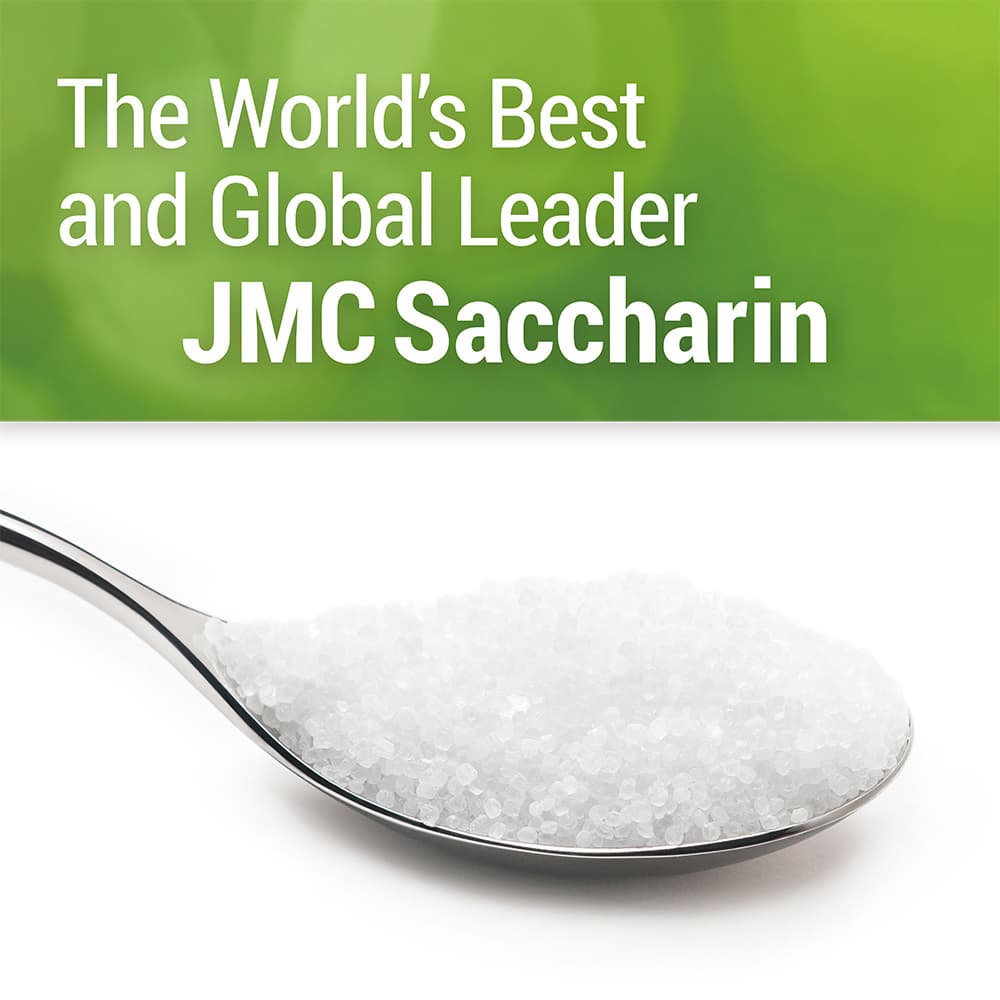Saccharin
Saccharin is a high intensity, artificial sweetener. Saccharin tastes over 500 times sweeter than sugar but has no calories.
Negotiable Min Order Quantity Unit
- Required Quantity
-
- Place of Origin
- South Korea
- Brand name
- Saccharin
- Payment Terms
- D/A,D/P,L/C,T/T
- Production method
- Available,OBM
- Shipping / Lead Time
- Negotiable / Negotiable
- Keyword
- saccharin, sodium saccharin, sulfur, saccharin insoluble
- Category
- Toothbrush Sanitizer , Toothpaste & Mouthwash , Energy Drinks , Juice
Apply a video call to the Supplier

JMC Corporation
- Verified Certificate
-
16


| Product name | Saccharin | Certification | Kosher , HALAL |
|---|---|---|---|
| Category |
Toothbrush Sanitizer
Toothpaste & Mouthwash Energy Drinks Juice |
Ingredients | - |
| Keyword | saccharin , sodium saccharin , sulfur , saccharin insoluble | Unit Size | 275.0 * 370.0 * 290.0 mm |
| Brand name | Saccharin | Unit Weigh | 25 kg |
| origin | South Korea | Stock | 3000 |
| Supply type | Available,OBM | HS code | 292511 |
Product Information
Saccharin is a high intensity, artificial sweetener that has been used for over one hundred years as a sugar substitute. Saccharin tastes over 500 times sweeter than sugar which means that it can be used in small amounts to reduce sugar consumption.
Saccharin has no calories and a Glycemic Index (GI) of zero. Saccharin is not absorbed or broken down by the body and has no effect on blood sugar levels. It is therefore considered as an important sugar substitute to help combat diabetes and obesity. Saccharin is also heat stable. Under conditions of increasing heat, saccharin remains stable at temperatures up to at least 250°C. Therefore, saccharin is commonly used in candies, cookies, some formulations of soft drinks as well as in mouth washes, toothpastes and as part of the tablet coating in medicines. We also produce the saccharin that is used to make table top sweeteners.
- Sodium Saccharin 15% moisture
- Sodium Saccharin 6% moisture
- Insoluble Saccharin
- Verified Certificate
-


B2B Trade
| Price (FOB) | Negotiable | transportation | Air Transportation,Express,Land Transportation,Ocean Shipping |
|---|---|---|---|
| MOQ | Negotiable | Leadtime | Negotiable |
| Payment Options | D/A,D/P,L/C,T/T | Shipping time | Negotiable |

- President
- Jung Won-Sik
- Address
- Onsan-eup, Hwasan-ri,125, Ulju-gun, Ulsan, Korea
- Product Category
- Food Additives
- Year Established
- 1953
- No. of Total Employees
- 101-500
- Company introduction
-
JMC (originally the Jeil Moolsan Company) was established in 1953 and is a world leader in the field of saccharin and sulfur-based fine chemicals. JMC became part of the KISCO group in 2004. JMC is a large-scale manufacturer of saccharin, a safe, artificial sweetener that enables a drastic reduction in sugar content. JMC supplies saccharin to the world’s largest quality-oriented multinational food and medicine producers. JMC produces saccharin using the traditional Remsen and Fahlberg Process which was discovered in 1879 JMC is the only company that produces all of the high purity raw_materials for Saccharin such as OTSA(ortho-Tolu-enesulfonamide) on its own production lines. No organic solvents are used during the production process of Saccharin and JMC’s complete, vertical integration ensures the highest purity materials which delivers the highest quality saccharin available. JMC’s saccharin meets the food safety standard, FSSC 22000. JMC also produces fine chemicals for applications such as florescent pigments, pharmaceutical intermediates, electronics, plastics and agricultural products
- Main Product



































 South Korea
South Korea



_2.png)
_2.png)
